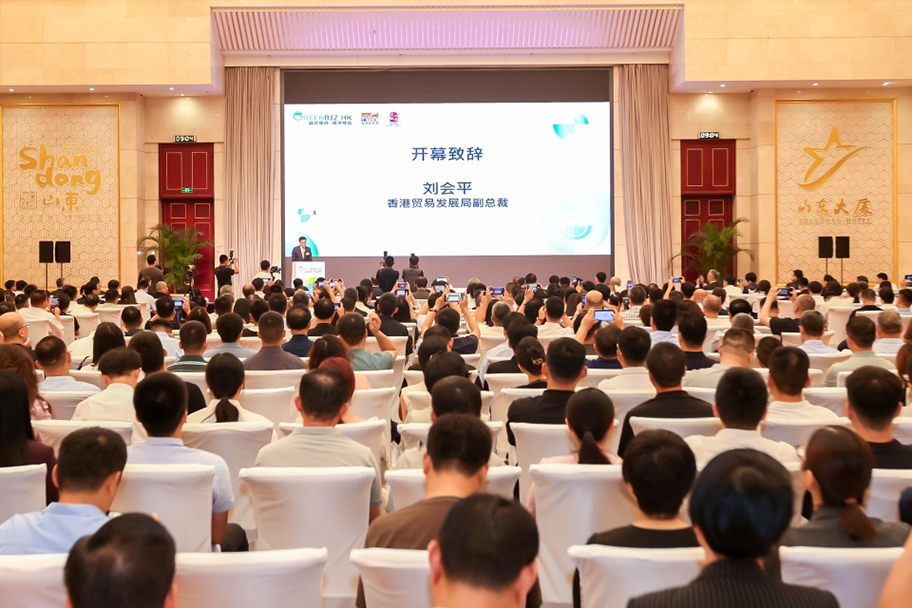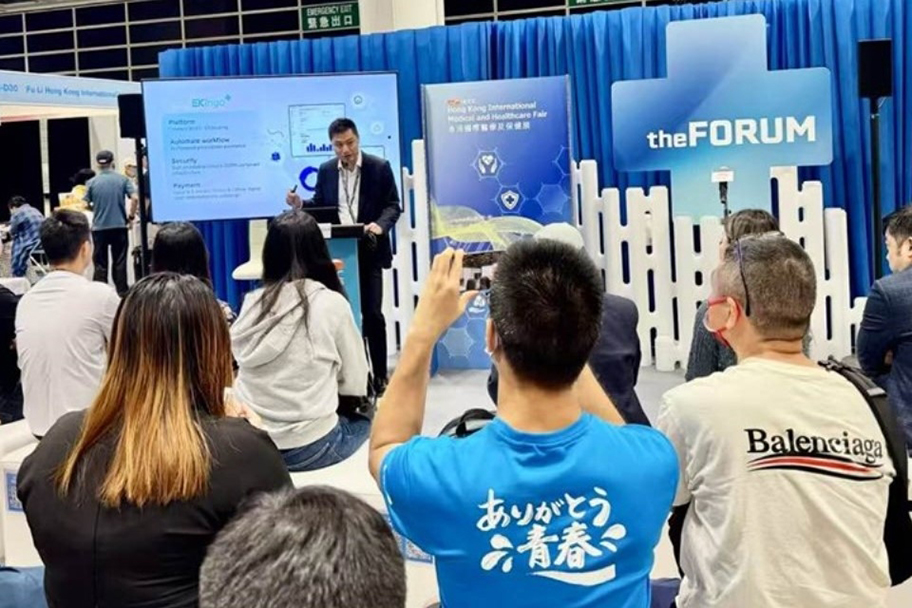ASEAN in Focus: Indonesia as an Investment Destination
In order to boost its economy and attract investment, Indonesia’s government is determined to overhaul the country’s essential infrastructure. In line with this, the Sea Toll Road programme – a development with a number of similarities to China’s Belt and Road Initiative – will significantly enhance Indonesia’s maritime capabilities. With the country’s business environment becoming ever more vibrant, while its infrastructure shortcomings become less of a problem, innovative and visionary Hong Kong entrepreneurs – including those in the service sector – should prepare themselves for a whole new world of opportunities.
A World of Opportunities and a Huge Funding Gap
Indonesia is at the very forefront of the boom in infrastructure redevelopment taking place across Southeast Asia. Despite difficulties in maintaining the country’s mandated 7% annual economic growth, President Joko Widodo seemingly remains determined to improve the country’s essential infrastructure.
As part of the 5.5% increase in the overall spending specified in the 2017 State Budget, a total of IDR 387.3 trillion (approximately US$30 billion) has been earmarked for infrastructure development. This is the largest amount ever allocated to such projects and represents an increase of 22% on the previous budget.
In terms of where the money will actually be spent, the Committee of Infrastructure Priorities Development Acceleration (KPPIP) has identified 30 projects – out of 225 national strategic undertakings – as priorities for the period 2016-2019.
The government has adopted an innovative and seemingly effective approach for generating funding for these infrastructure projects. Its new tax amnesty programme, for instance, is said to have proved particularly successful. When its first phase ended on 30 September 2016, the programme had already netted the Indonesian government some IDR 97.2 trillion (approximately US$7.5 billion, 59% of the overall target) in additional tax revenue.
The tax amnesty programme offers unprecedented immunity from prosecution as well as concessional tax penalties to individual and corporate taxpayers who voluntarily declare assets (in or outside Indonesia) that went undeclared prior to 31 December 2015. The amnesty is now scheduled to run from 18 July 2016 to 31 March 2017 (the reporting period of the Indonesian tax authority).
Though considered the most successful tax amnesty programme ever undertaken anywhere in the world, Bank Indonesia – the country’s central bank – is forecasting that the final sum repatriated will still be far below the figure required to complete the current infrastructure redevelopment programme. Indeed, it is estimated that the state and regional budgets will only raise around 40% of the total infrastructure funding requirement as set out in the National Medium Term Development Plan (RPJMN) 2015-2019 – IDR 1.98 quadrillion (approximately US$142 billion) out of IDR 4.8 quadrillion (US$345 billion). It is expected that this shortfall will be covered through co-operation with the private sector on a Public Private Partnership (PPP) basis.
Java: Leading Indonesia’s Regional Investment
Home to nearly 60% of all native Indonesians, Java is the most densely populated island on Earth. It’s also a favourite destination for many of those looking to invest in Indonesia and accounts for 54% of the total investment the country secured in 2016. This includes both domestic (DDI) and foreign investment (FDI), across the six economic corridors stipulated under the Masterplan for Acceleration and Expansion of Indonesia’s Economic Development (MP3EI).
Java is made up of four regions and two special territories. Of these, Banten, Central Java, East Java, the Special Territory of Jakarta and West Java were ranked high on the Top 10 lists of DDI and FDI destinations for 2016, with East Java particularly popular among domestic investors and West Java among foreign investors.
This concentration of investors reinforces the island’s role in driving the country’s industrial development and service sectors under the provisions of the MP3EI. As a result, Java looks sure to remain a prime target for international investors as Indonesia take its place amongst the world’s developed countries.
The comparative lack of interest in investment outside of Java, however, may hamper the country’s overall development. In 2014, in order to encourage a more even spread of investment across the country and in line with his ambition to transform Indonesia into a ‘global maritime axis’, President Widodo announced the Sea Toll Road programme as part of the 2015-2019 National Medium Term Development Plan (RPJMN 2015-2019).
China’s Maritime Silk Road and Indonesia’s Sea Toll Road: The Crossover
The Sea Toll Road program is intended to boost Indonesia’s maritime capabilities, which currently support 40% of its international sea trade flow. It also includes measures designed to strengthen governance and close any security gaps seen as likely to threaten the flow of trade or fishing activities within the waterway.
The programme focuses on enhancing inter-connectivity between islands (local integration) and upgrading port infrastructure (globally connected). When fully implemented, Indonesian ports should be more competitive and more attractive to international shippers and forwarders, particularly when compared to the ports of Singapore and Malaysia, both which are currently more popular channels for international traffic.
As part of the Sea Toll Road project, 24 of the nation’s 111 commercial seaports will be expanded, including five hub ports – Belawan/Kuala Tanjung in Sumatra, Tanjung Priok/Kali Baru in Jakarta, Tanjung Perak in Surabaya, Makassar in South Sulawesi, Bitung in North Sulawesi. Some 19 feeder ports are also within its remit, including Batam in Sumatra, Tanjung Emas in Semarang and Sorong in Papua. The programme will expand their capacities, allowing them to handle higher levels of cargo and passenger traffic between western and eastern Indonesia, while also facilitating the further development of the country’s Industrial Estates.
This hub-and-feeder model has also been designed to increase national security by limiting the movement of foreign vessels to hub ports in domestic waters. At the same time, by utilising the feeder ports for regional consolidation, it lends flexibility to the schedule frequency of many of the ports, while also shortening the routes between them.
Logically, any upgrade to the ports of western Indonesia should increase their chances of attracting vessels looking to trans-ship across the Straits of Malacca without calling at Singapore. The developments in eastern Indonesia, meanwhile, are largely designed to reduce the regional price disparity of goods in western and eastern Indonesia by up to 30%. The intention is to achieve this by consolidating the fragmented forwarding sector and rebalancing the inter-island cargo flows.
At present, six regular cargo routes are being introduced, while around 100 sea transport routes are being optimised in order to boost connectivity between the different regions of the country. By 2019, the plan is to build or acquire 609 vessels in order to support the fleet’s expected increase in passenger and cargo traffic. With such moves being implemented in tandem with other logistics infrastructure projects, in order to ease congestion and achieve shorter holding times for containers at major seaports, it is hoped that logistics costs in Indonesia will be reduced from their current level of 26% of GDP to 19% by 2020, then reduced still further to 9% by 2035.
From a more strategic and international point of view, the Sea Toll Road programme is very much in line with China’s Belt and Road Initiative (BRI), which looks to improve business connectivity between Southeast Asia, Africa and the Indian continent. In light of this then, the development of logistics infrastructure along many of Indonesia’s busiest waterways, including the straits of Malacca, Sunda, Lombok and Wetar, is crucial to the success of both of these far-reaching initiatives.
Opportunities for Foreign Investment
In 2015, the realised funds for infrastructure development totalled IDR 190 trillion (US$14.42 billion), more than double the 2010 allocation. For 2017, another record-high level of funding has been allocated for infrastructure spending. Despite this, Indonesia remains in dire need of private participation in its development programme, as the existing funds can only meet roughly 40% of the total infrastructure funding required up until 2019.
Aside from its major on-going infrastructure developments, such as the Sea Toll Road, Indonesia is committed to several other substantial projects, most notably the provision of facilities for the 2018 Asian Games, scheduled to be held in Jakarta and Palembang in South Sumatra. In order to deliver on these commitments, the government has continually revised its negative investment list in a bid to widen the scope of foreign investment in Indonesia. It is hoped that this will engage the private sector by offering foreign investors more favourable terms with regard to ownership and local SME partnership requirements.
Since September 2015, the Indonesian government has introduced a series of economic stimulus packages designed to boost investment through deregulation and fiscal incentivisation. These measures have included streamlining the approval and procurement procedures required for infrastructure projects, a temporary reduction in tax on revalued fixed assets and cuts to energy prices.
At present, one of the other options available for infrastructure financing is the newly established 57-member Asian Infrastructure Investment Bank (AIIB), of which Indonesia is one of the co-founders and one of its principal backers. To date, the AIIB has approved only one programme in Indonesia – the National Slum Upgrading Project, an initiative intended to revitalise basic infrastructure, including drainage systems and water supply access, in 150 towns and cities across Indonesia. Two more projects – related to improving the safety and efficiency of dam operations and establishing a regional infrastructure development fund – are currently under consideration.
No Strangers to Indonesia: Hong Kong Investors
As far as foreign investment is concerned, Hong Kong is no stranger to Indonesia. In 2016, for instance, Hong Kong was the four-largest FDI investor in Indonesia. In this regard, it was behind only Singapore, Japan and the Chinese mainland, while being ahead of the Netherlands and the US. Between 2011 and 2016, Hong Kong’s realised investment in Indonesia grew at a compound annual growth rate (CAGR) of 76%, rising from US$135.0 million to US$2.2 billion.
In October 2013, during a speech to the Indonesian Parliament, Xi Jinping, China’s President, first outlined his vision of the 21st Century Maritime Silk Road and his plans to establish the AIIB. Since that time, Hong Kong’s investment commitment in Indonesia has soared, rising from US$2.9 billion in 2013 to US$4.5 billion in 2015.
A significant proportion of Hong Kong’s investment in Indonesia has been in the real estate, industrial estate and business sectors. At present, a substantial number of Hong Kong companies have investments in Indonesia, including such well-known property developers as Hongkong Land, the Baleno, Bossini, Giordano and Samuel and Kevin fashion brands, toy manufacturers Lung Cheong and Itacho Sushi, the popular sushi chain.
At present, only a relatively small number of Hong Kong-based SMEs have the financial and staff resources required to manage mega-infrastructure projects. A substantial number of innovative and visionary Hong Kong entrepreneurs – including those in the services sector – are, however, ideally equipped to capitalise on many of the other opportunities emerging across Indonesia. As its business environment grows more vibrant and its infrastructure deficiency becomes a thing of the past, Indonesia’s population is becoming ever more willing and able to spend. In combination, all of this makes Indonesia an irresistible prospect for Hong Kong’s outward-looking business community.
A case in point here is OpenPort, a Hong Kong-based end-to-end logistics solution provider, offering app-based services for tracking business-to business shipments in emerging markets. Since opening its Jakarta office in late 2015, OpenPort has contributed significantly to the development of Indonesia’s logistic sector, an industry estimated to have a potential market value of around US$250 billion.
It has achieved this by introducing a common platform for shippers and forwarders, allowing them to track the delivery of goods in real time. This has resulted in a cost-effective and seamless integration of the logistics network and continuous optimisation of supply chains. This has proved a hugely appealing proposition for all parties involved in the increasingly intricate supply chains required by contemporary businesses.
Overall, OpenPort’s Java Office found success through its partnership with many of Indonesia’s increasingly tech-savvy logistics players. By working hand-in-hand with them, it is now seeking to continuously improve the country’s logistics network.














